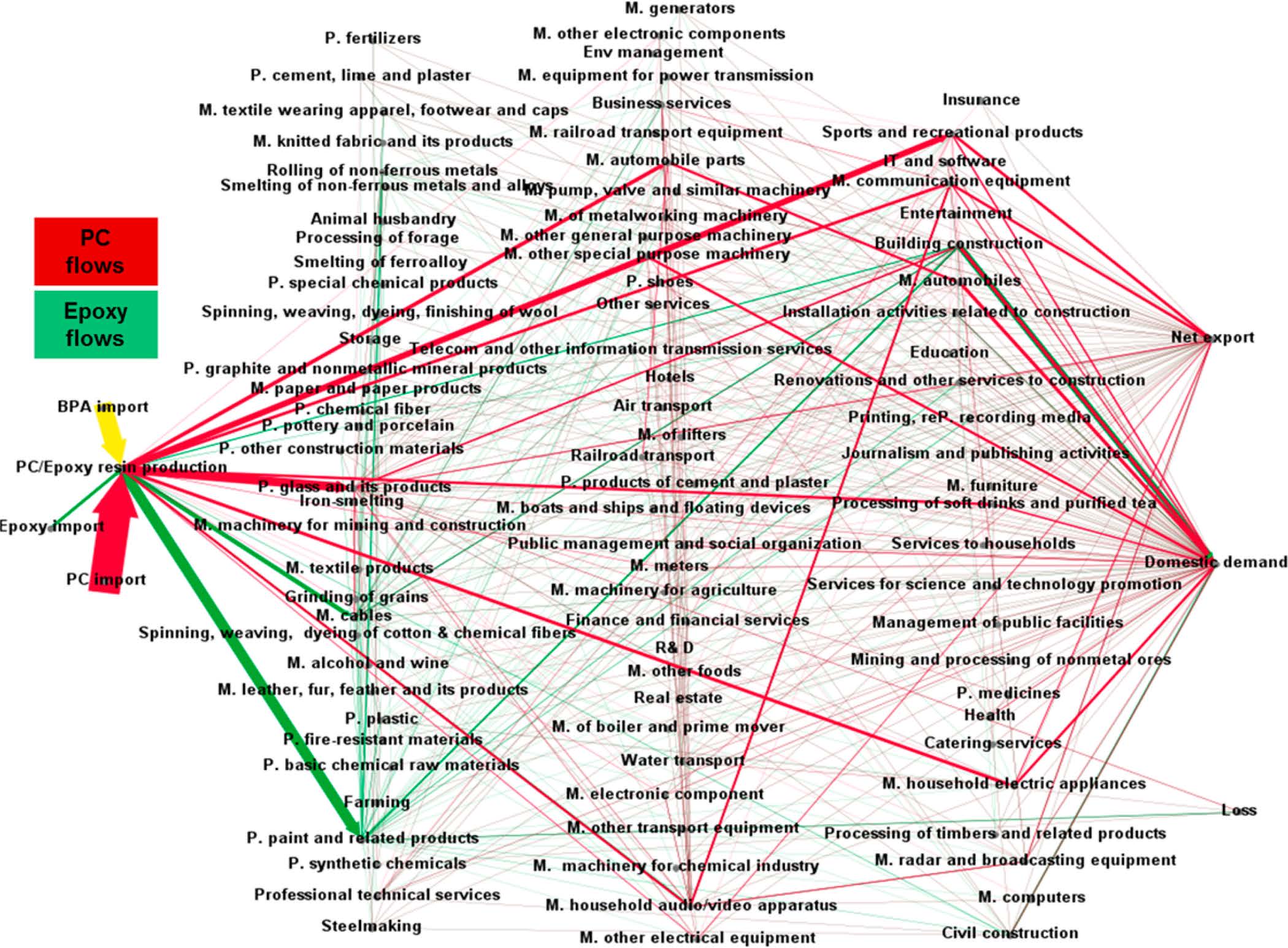Jiang, Daqian*; Chen, Wei-Qiang; Liu, Wei; Chertow, Marian*
Environmental Science & Technology 2017 51 (15), 8654–8662. DOI: 10.1021/acs.est.7b01986
Abstract
Bisphenol A (BPA), a widely used petrochemical compound, has become an emerging global environmental management challenge because its leakage is associated with potential environmental and human health impacts. Until now, available BPA statistics have been limited to the products that directly use BPA. In this study, we delineate direct and indirect BPA flows for the 2012 Chinese economy. We find that construction, production of educational and recreational products, and automobile manufacturing are the most BPA-intensive sectors in terms of total BPA flows (300, 157, and 130 Gg total BPA flows, respectively). The public management and health sectors, however, incur significant indirect BPA flows, defined as embedded and inter-sectoral BPA placed into use, even though direct BPA use by these sectors is limited. By revealing the currently overlooked indirect BPA flows, this study reveals data gaps that are highly relevant to improving the accuracy of estimated BPA flows and losses. The method used herein is transferrable to other emerging and environmentally relevant materials, thereby providing the holistic understanding needed for cities, regions, or nations to design effective policy interventions.
Inter-sectoral BPA flow network in the Chinese economy in 2012.
